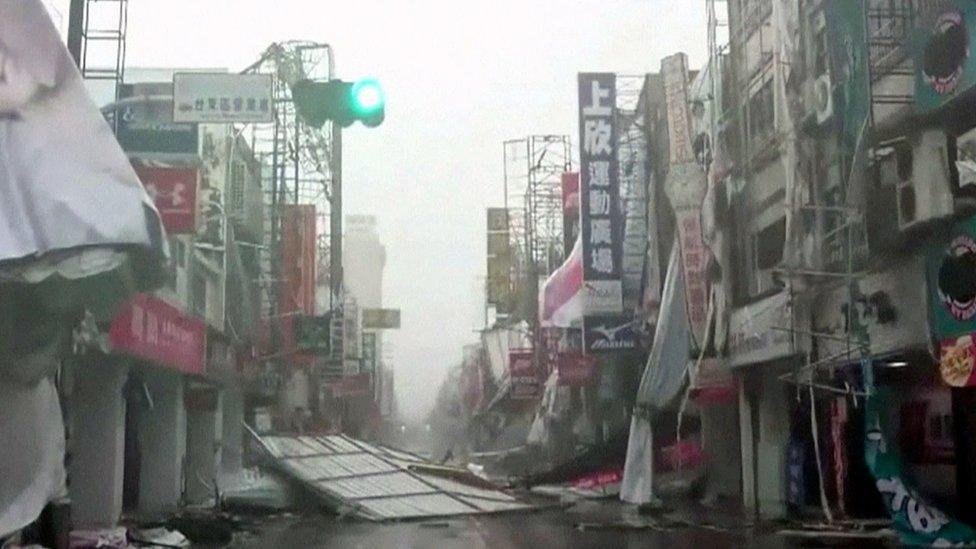Typhoon Nida batters southern China after shutting down Hong Kong
- Published
BBC Weather's Alex Deakin explains Typhoon Nida's impact
Large areas of southern China are on emergency alert as a powerful typhoon batters the region.
Typhoon Nida hit Hong Kong on Tuesday with high winds and torrential rain, forcing schools, businesses and transport services to shut.
But the storm was reported to be weakening as it moved to the mainland.
Guangzhou in Guangdong province issued a red alert, its highest weather warning, and people have been advised to stockpile food and essentials.
The southern cities of Zhuhai and Shanwei are also on red alert, with transport, industry and public services largely grinding to a halt.
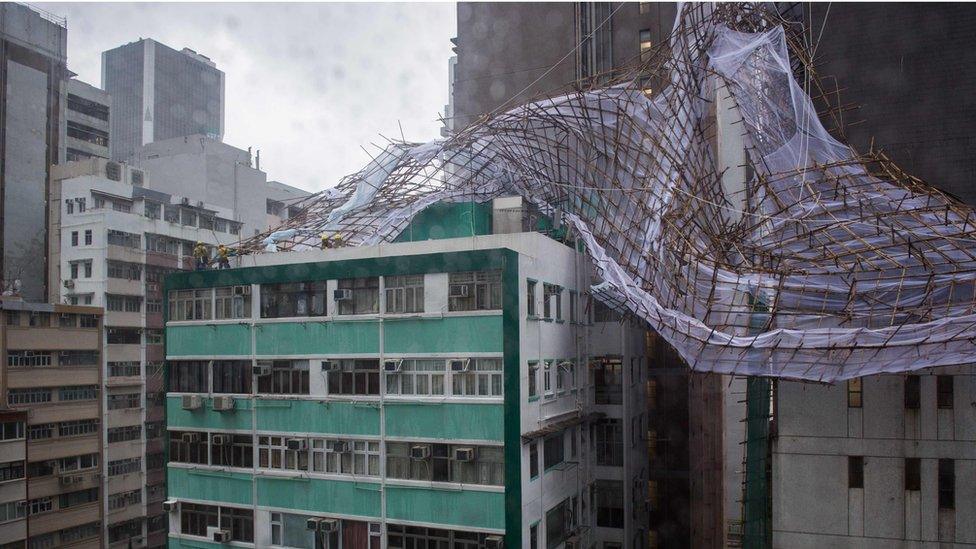
This huge bamboo scaffolding in Hong Kong was another victim of high winds
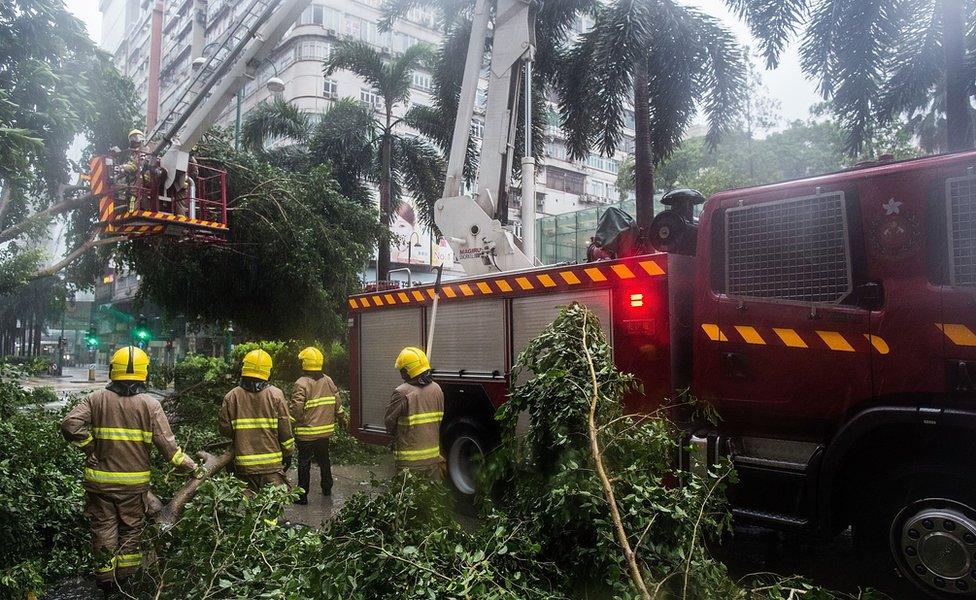
The cleanup is now underway in the Chinese territory
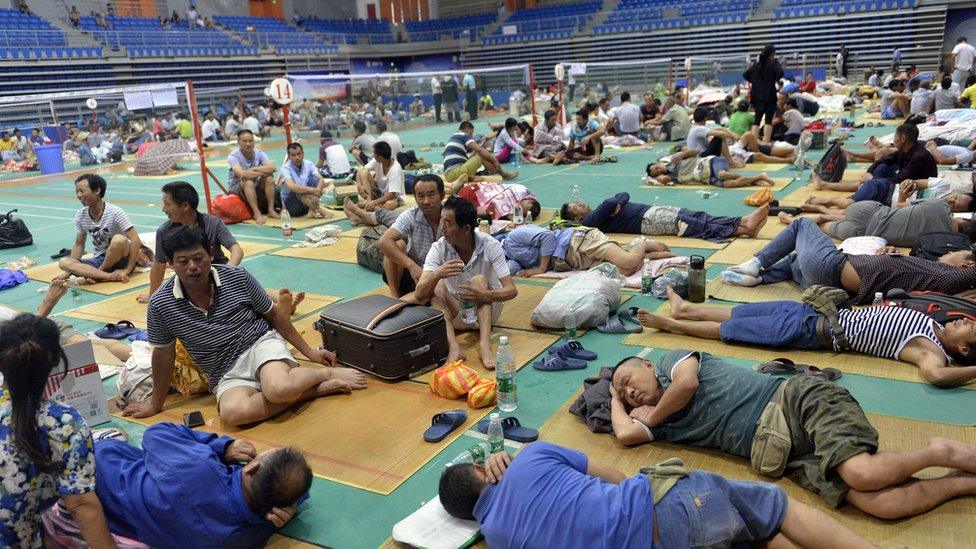
Guangzhou in Guangdong province issued a red alert, its highest weather warning
Nida, which earlier passed over the Philippines, is set to be the strongest typhoon in the region since 1983, one official told Chinese state media, warning it could bring severe flooding.
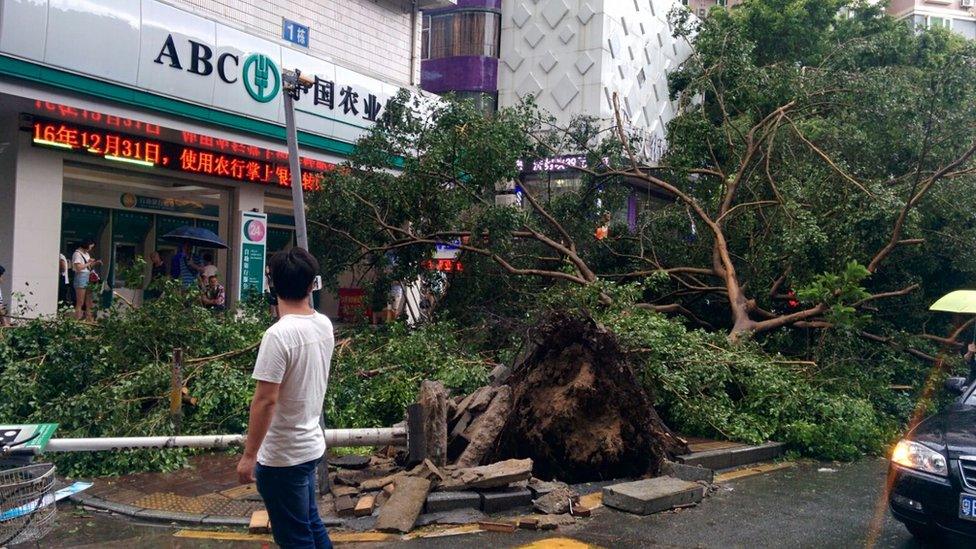
The strong typhoon packed winds of up to 151.2 km/h

The city's typhoon warning was downgraded later on in the day, with Nida weakening to a tropical storm
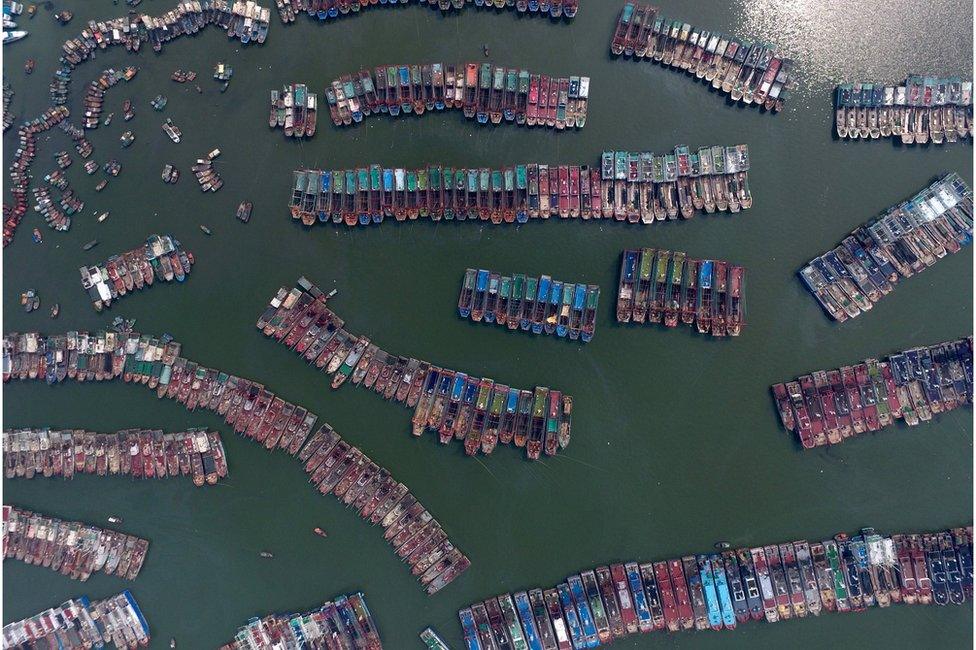
Fishing boats were parked in ports in Guangdong ahead of the typhoon's arrival
In Hong Kong, thousands of workers were evacuated from an offshore oil platform and from a series of tunnels and bridges being built to link the territory with two other cities.
Hundreds of people took refuge in government shelters in the city, amid torrential rain and gusts of over 150km/h (93mph).
Although Hong Kong officials ended their rainstorm alert at midday on Tuesday, they warned residents there was still a risk of flooding in low-lying areas.
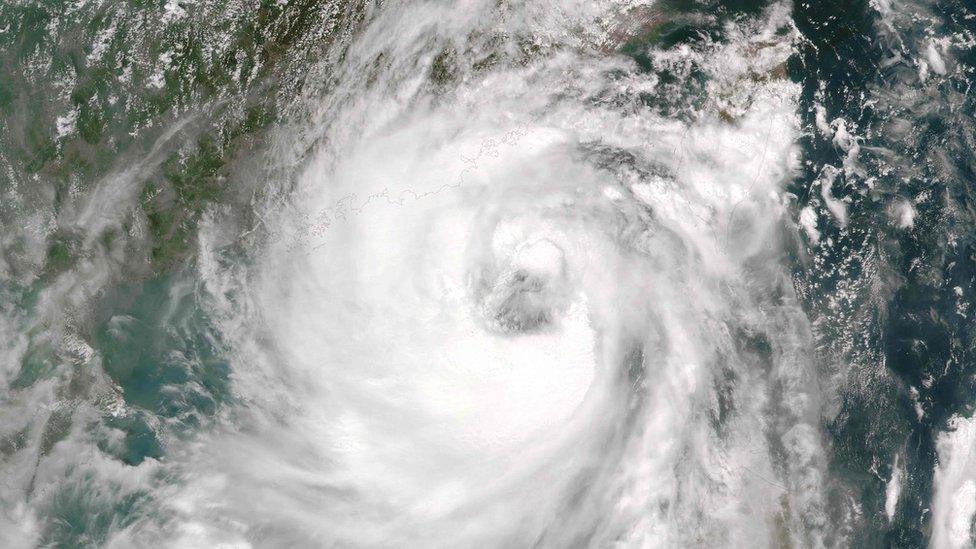
A Nasa satellite image showed Typhoon Nida approaching China on Monday
Southern China is hit by heavy rains every monsoon season, but this year has been particularly bad.
In July, Typhoon Nepartak killed dozens of people in Fujian province and forced hundreds of thousands of Chinese people from their homes. It also caused deaths and damage in Taiwan.
- Published7 January
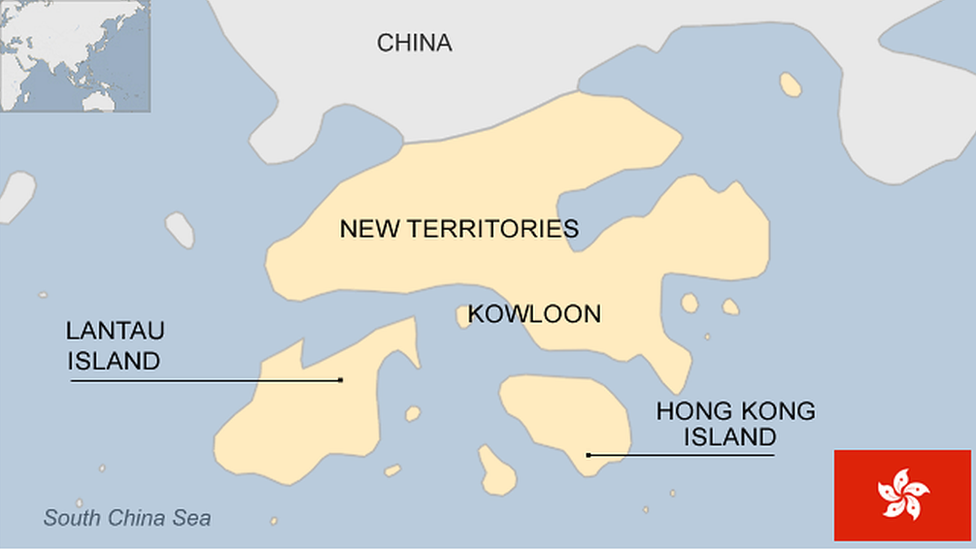
- Published18 July 2016
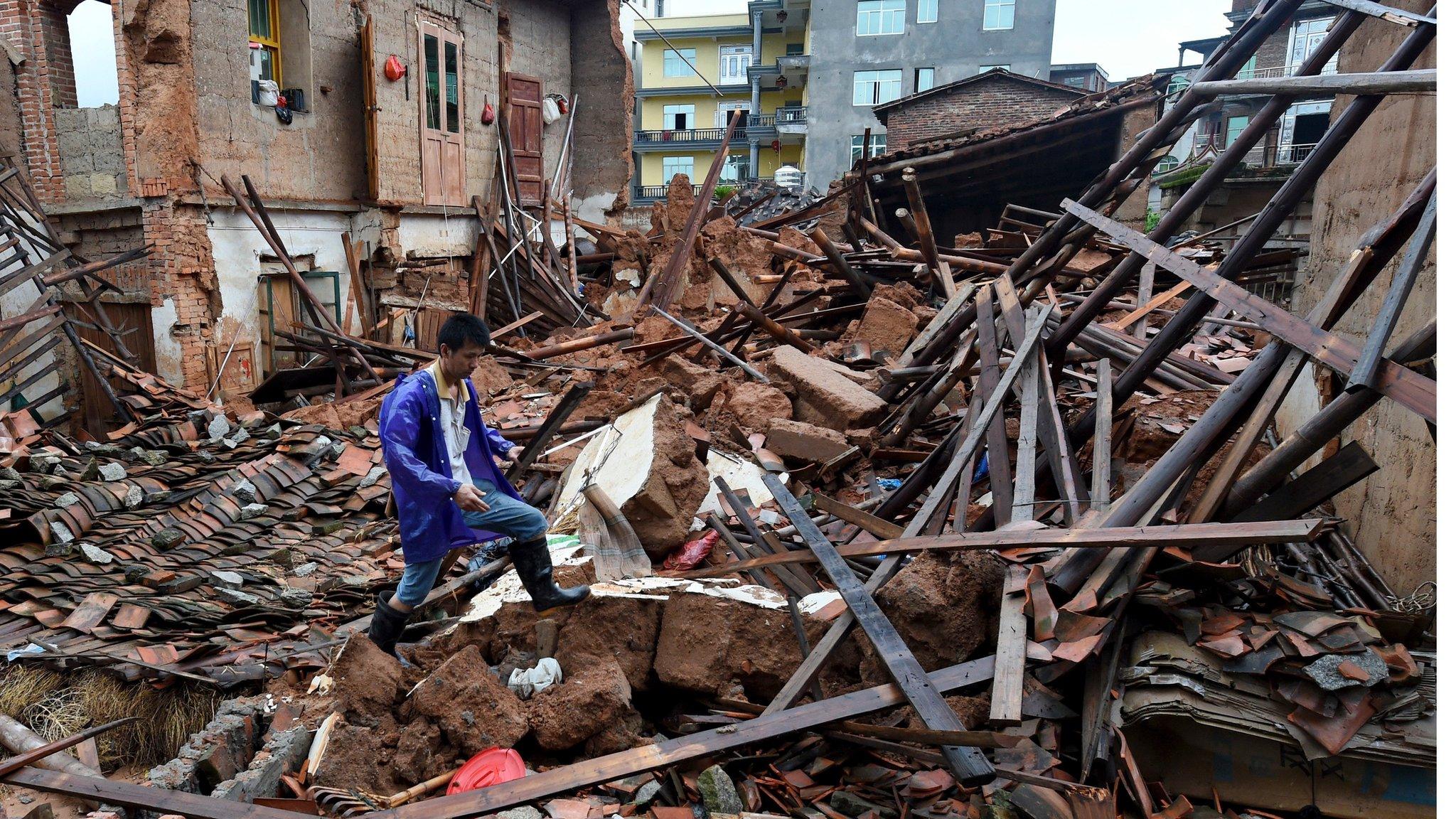
- Published8 July 2016
